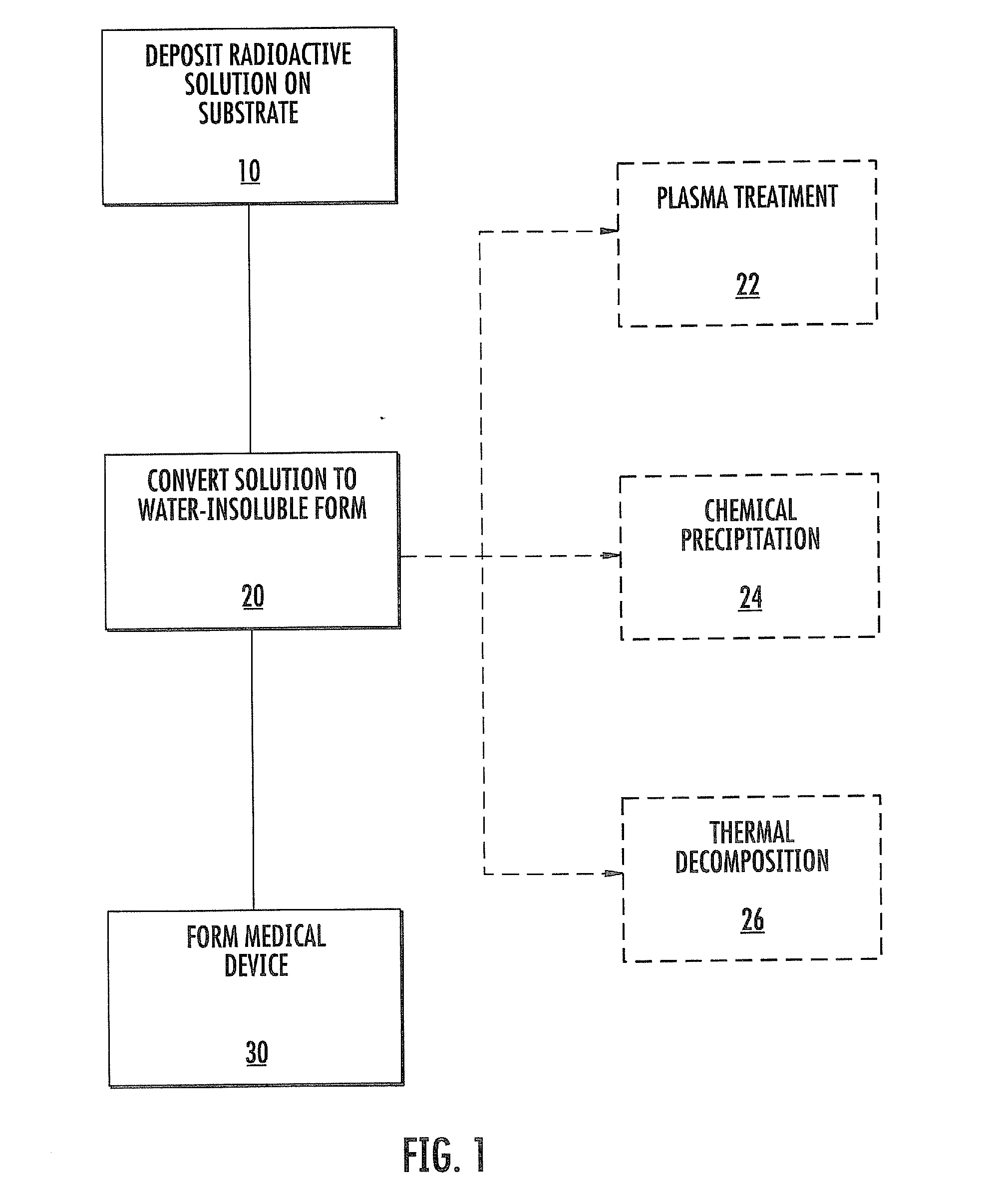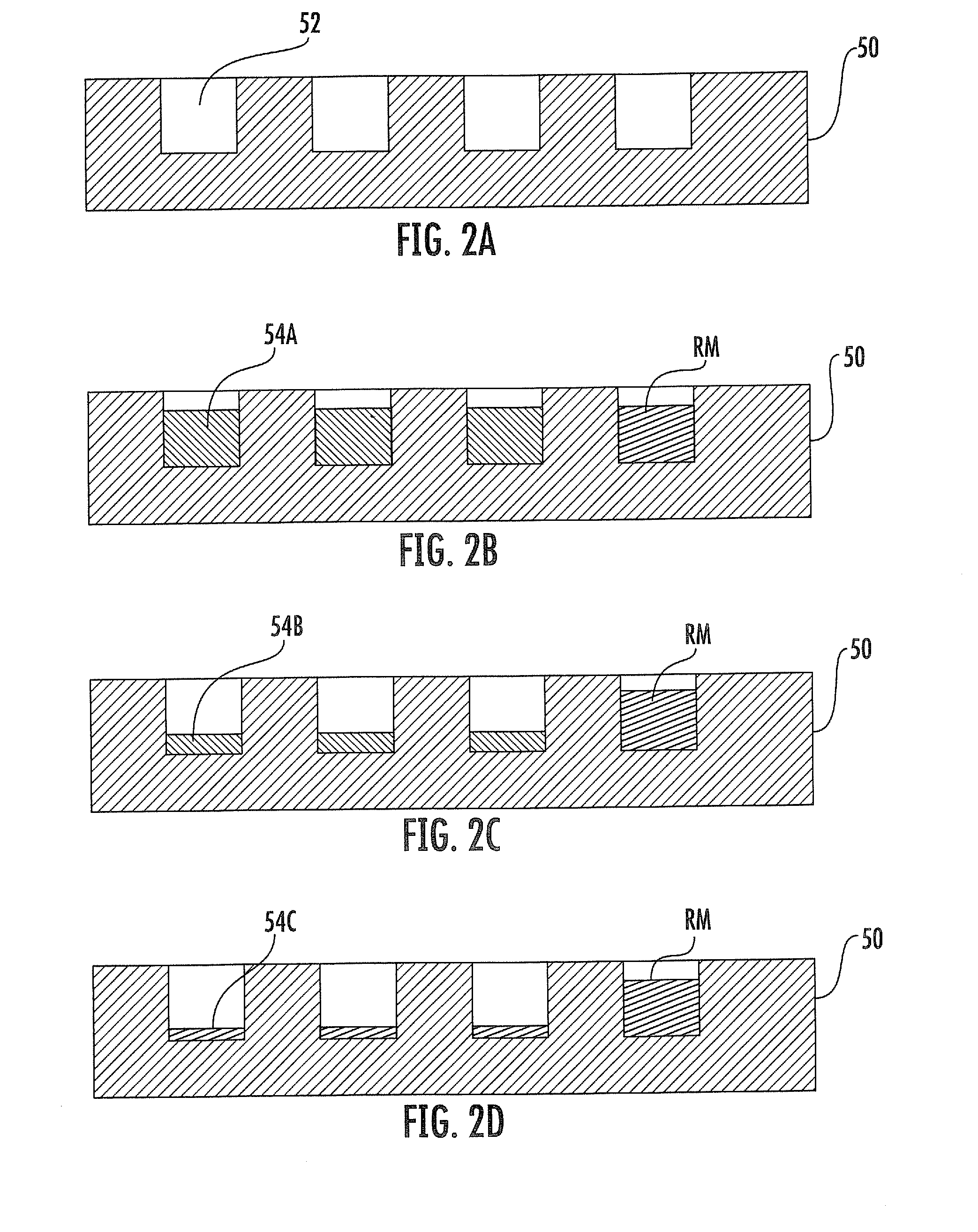Brachytherapy devices and related methods and computer program products
a brachytherapy device and radiation treatment technology, applied in the field of low-dose rate brachytherapy radiation treatment methods, systems and computer program products, can solve the problems of relative complex procedure, deviation in seed placement, and tendency of seeds to migra
- Summary
- Abstract
- Description
- Claims
- Application Information
AI Technical Summary
Benefits of technology
Problems solved by technology
Method used
Image
Examples
Embodiment Construction
[0007]According to some embodiments of the invention, methods of forming a low-dose-rate (LDR) brachytherapy device include depositing a solution comprising a soluble form of a radioactive material on a substrate. The soluble form of the radioactive material is converted to a water-insoluble form of the radioactive material on the substrate. A medical device is formed from the substrate and the water-insoluble form of the radioactive material.
[0008]According to some embodiments of the invention, a low-dose-rate (LDR) brachytherapy device includes a substrate having a micropattern thereon. The micropattern includes spaced-apart regions having a water-insoluble form of a radioactive material thereon.
[0009]According to some embodiments of the invention, methods of forming a low-dose-rate (LDR) brachytherapy device include depositing a solution comprising a soluble form of a radioactive material on a substrate using a solenoid dispensing system having a controlled pressurized fluid sour...
PUM
 Login to View More
Login to View More Abstract
Description
Claims
Application Information
 Login to View More
Login to View More - R&D
- Intellectual Property
- Life Sciences
- Materials
- Tech Scout
- Unparalleled Data Quality
- Higher Quality Content
- 60% Fewer Hallucinations
Browse by: Latest US Patents, China's latest patents, Technical Efficacy Thesaurus, Application Domain, Technology Topic, Popular Technical Reports.
© 2025 PatSnap. All rights reserved.Legal|Privacy policy|Modern Slavery Act Transparency Statement|Sitemap|About US| Contact US: help@patsnap.com



